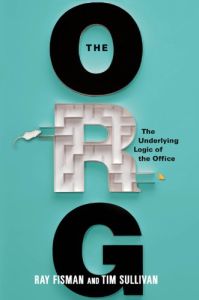Join getAbstract to access the summary!

Join getAbstract to access the summary!
Ray Fisman and Tim Sullivan
The Org
The Underlying Logic of the Office
Twelve, 2013
What's inside?
Everyone knows what’s wrong with organizations, so what’s right about them?
Recommendation
Bureaucracies’ shortcomings are well-known, and everybody who ever hung out at a water cooler has a story about corporate stupidity. So why do people keep grouping together in large structures? To find out why and when organizations work, professor of social enterprise Ray Fisman and economics editor Tim Sullivan examine organizations, including police departments, churches and online companies. They integrate their sometimes meandering observations with history, economic theory and more than a trace of wit. Those who want to know how businesses function will find this look at human psychology and organizational culture intriguing and engaging.
Summary
About the Authors
Ray Fisman is the co-author of Economic Gangsters and a professor of social enterprise at Columbia Business School. Tim Sullivan is editorial director of Harvard Business Review Press.

















Comment on this summary